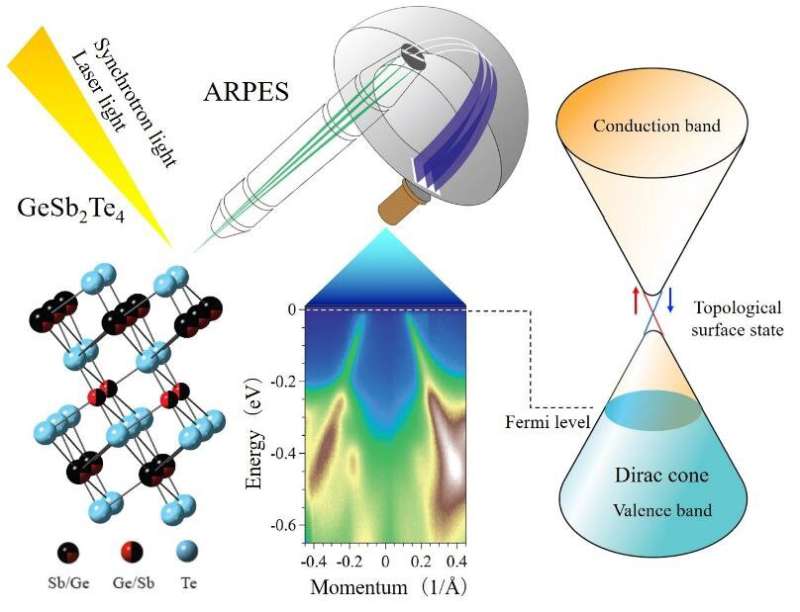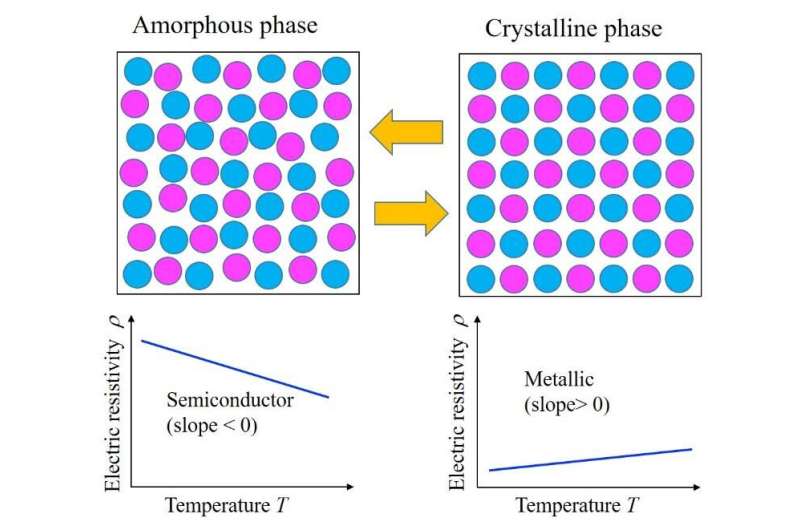Discovery of massless electrons in phase-change materials provides next step for future electronics

Researchers have found electrons that behave as if they have no mass, called Dirac electrons, in a compound used in rewritable discs, such as CDs and DVDs. The discovery of 'massless' electrons in this phase-change material could lead to faster electronic devices.
The international team published their results on July 6 in ACS Nano, a journal of the American Chemical Society.
The compound, GeSb2Te4, is a phase-change material, meaning its atomic structure shifts from amorphous to crystalline under heat. Each structure has individual properties and is reversible, making the compound an ideal material to use in electronic devices where information can be written and rewritten several times.
"Phase-change materials have attracted a great deal of attention owing to the sharp contrast in optical and electrical properties between their two phases," said paper author Akio Kimura, professor in the Department of Physical Sciences in the Graduate School of Science and the Graduate School of Advanced Science and Engineering at Hiroshima University. "The electronic structure in the amorphous phase has already been addressed, but the experimental study of the electronic structure in the crystalline phase had not yet been investigated."
The researchers found that the crystalline phase of GeSb2Te4 has Dirac electrons, meaning it behaves similarly to graphene, a conducting material that consists of a single layer of carbon atoms. They also found that the surface of the crystalline structure shares characteristics with a topological insulator, where the internal structure remains static while the surface conducts electrical activity.

"The amorphous phase shows a semiconducting behavior with a large electrical resistivity while the crystalline phase behaves like a metallic with a much lower electrical resistivity," said Munisa Nurmamat, paper author and assistant professor in the Department of Physical Sciences in the Graduate School of Science and the Graduate School of Advanced Science and Engineering at Hiroshima University. "The crystalline phase of GeSb2Te4 can be viewed as a 3-D analog of graphene."
Graphene is already considered by researchers to be a high-speed conducting material, according to Nurmamat and Kimura, but its inherently low on- and off-current ratio limits how it is applied in electronic devices. As a 3-D version of graphene, GeSb2Te4 combines speed with flexibility to engineer the next generation of electrical switching devices.
More information: Munisa Nurmamat et al, Topologically Nontrivial Phase-Change Compound GeSb2Te4, ACS Nano (2020). DOI: 10.1021/acsnano.0c04145
Journal information: ACS Nano
Provided by Hiroshima University




















